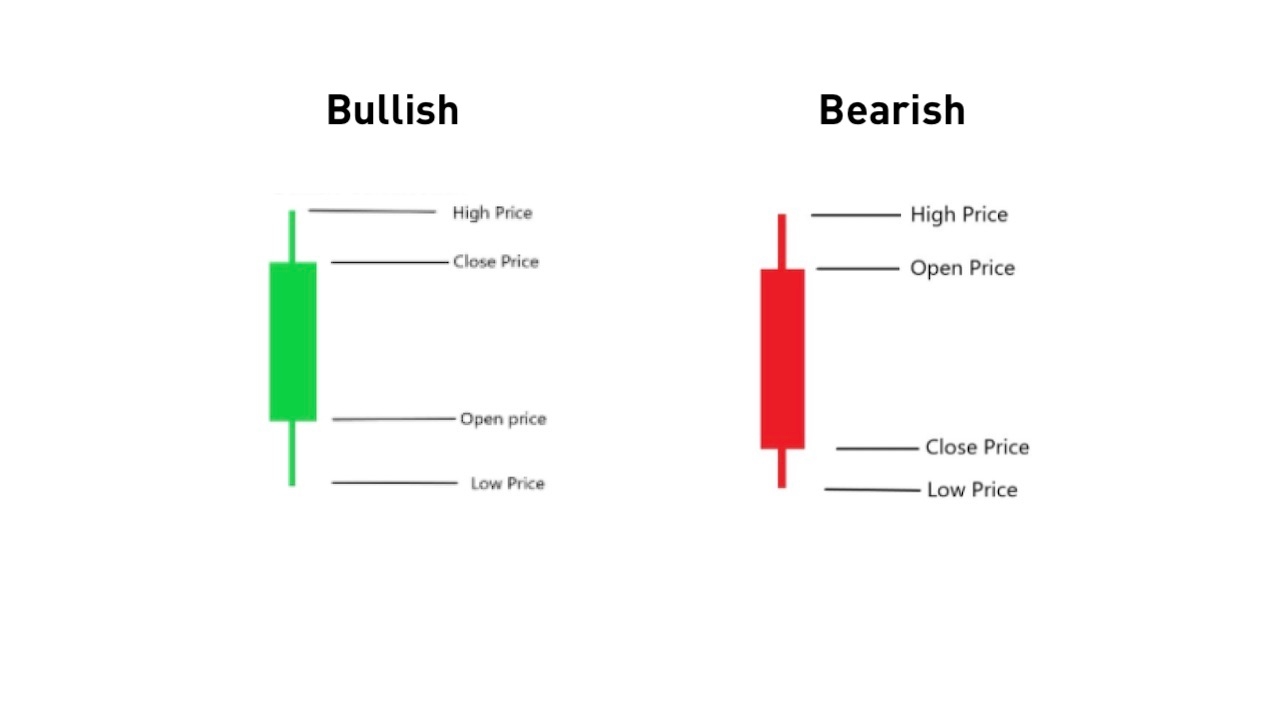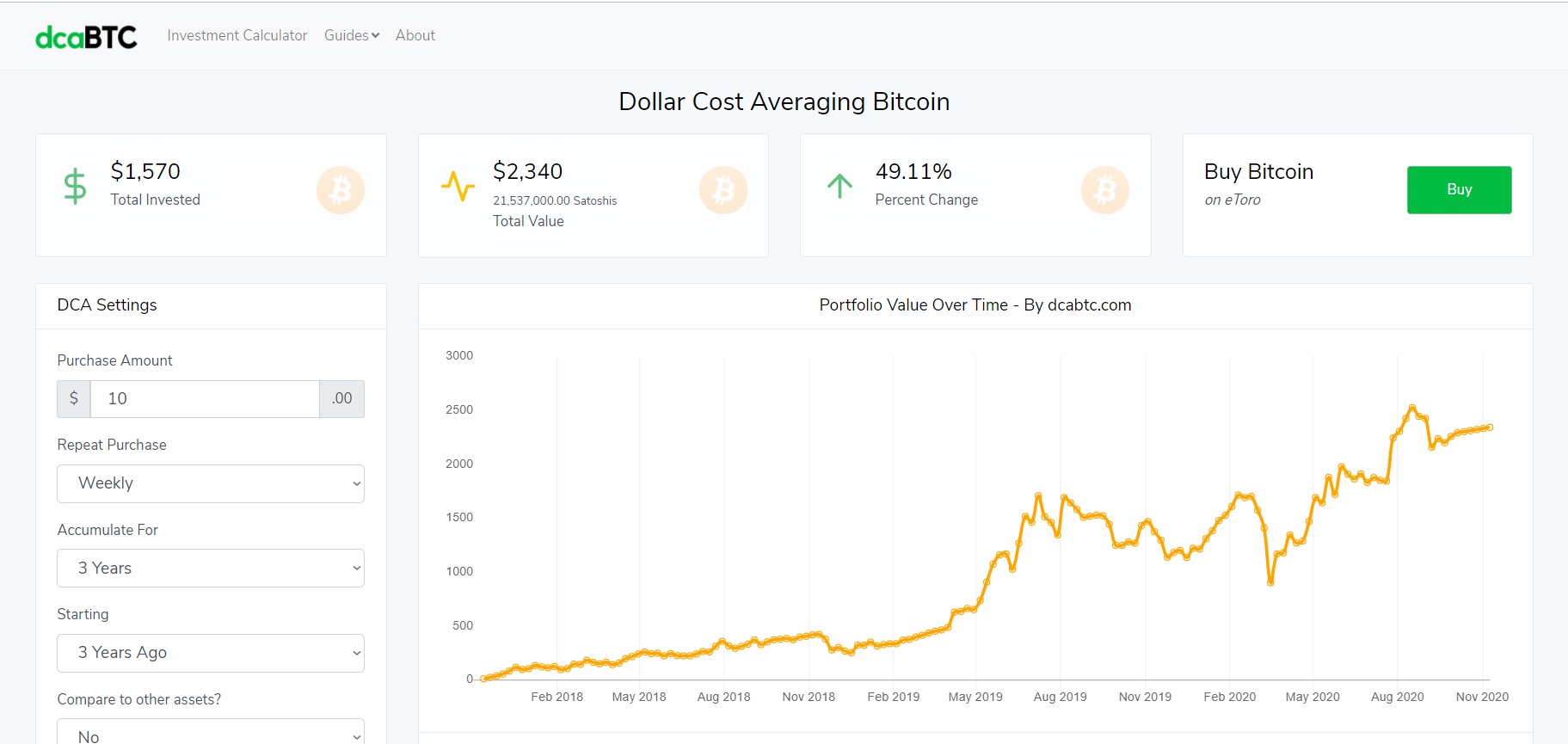Introduction
Welcome to the exciting world of the crypto market! Over the past decade, cryptocurrencies like Bitcoin and Ethereum have gained immense popularity, attracting millions of investors and traders. The crypto market is a decentralized digital marketplace where various cryptocurrencies are bought and sold. It operates 24/7 with transactions happening across the globe in real-time.
The crypto market offers a unique investment opportunity with the potential for high returns. However, it is crucial to understand that the crypto market is highly volatile and subject to frequent price fluctuations. This volatility can lead to periods of significant market downturns.
Recent market events have spurred uncertainty and caused significant decreases in crypto prices. From sharp declines to prolonged bearish trends, it is essential for investors to be aware of the factors behind these downturns.
In this article, we will explore the reasons behind the recent crypto market downturn and the various factors that contribute to its volatility. We will delve into the impact of regulatory concerns, fear-driven panic selling, potential market manipulation, and the role sentiment and news play in influencing market sentiment. Additionally, we will highlight the intersection between the crypto market and the traditional stock market, and discuss how investors can navigate through market downturns effectively.
It is important to note that the purpose of this article is to provide insights and analysis regarding the recent downturn in the crypto market. This article does not constitute financial advice, and it is always recommended that investors do their own research and consult with financial professionals before making investment decisions.
What is the Crypto Market?
The crypto market, also known as the cryptocurrency market or digital asset market, refers to the decentralized marketplace where cryptocurrencies are bought, sold, and traded. It is a global network of individuals, institutions, and exchanges engaged in the buying and selling of various digital currencies.
Cryptocurrencies are digital or virtual currencies that use cryptography for security. The most well-known cryptocurrency, Bitcoin, was introduced in 2009, and since then, thousands of other cryptocurrencies have emerged. Each cryptocurrency operates on its own technology and has its unique features and use cases.
Unlike traditional financial markets, such as stocks or commodities, the crypto market operates 24 hours a day, 7 days a week, without any central authority controlling it. It is based on blockchain technology, a decentralized ledger that records all transactions across a network of computers.
The crypto market offers a range of opportunities for investors and traders. It allows individuals to invest in cryptocurrencies as a long-term investment strategy or engage in short-term trading to profit from price fluctuations. Some investors also participate in initial coin offerings (ICOs), which are akin to crowdfunding campaigns for new cryptocurrency projects.
One of the notable aspects of the crypto market is its high volatility. Prices of cryptocurrencies can experience sharp increases or steep declines within a short period. This volatility attracts risk-tolerant investors seeking potentially high returns. However, it also presents challenges and risks for those entering the market.
The crypto market operates through cryptocurrency exchanges, which are digital platforms that facilitate the buying and selling of cryptocurrencies. These exchanges provide users with wallets to store their digital assets securely. Some popular cryptocurrency exchanges include Binance, Coinbase, and Kraken.
Additionally, the crypto market has expanded beyond just trading cryptocurrencies. It has given rise to various applications and projects that utilize blockchain technology, such as decentralized finance (DeFi) platforms, non-fungible tokens (NFTs), and smart contracts. These innovations have further diversified the opportunities available within the crypto market.
As the crypto market continues to evolve, it is crucial for individuals to stay informed about the latest developments, regulations, and trends. Understanding the basics of the crypto market is essential for anyone interested in participating in this dynamic and ever-changing industry.
Factors Affecting the Crypto Market
The crypto market is influenced by a multitude of factors that contribute to its volatility and price movements. Understanding these factors can help investors make informed decisions and navigate the market more effectively. Here are some key factors that affect the crypto market:
1. Market Sentiment: Market sentiment refers to the overall feeling or attitude of investors towards the crypto market. Positive sentiment can drive prices higher, while negative sentiment can lead to significant market downturns. Market sentiment is influenced by a wide range of factors, including news events, market trends, social media sentiment, and investor confidence.
2. Regulatory Environment: Regulatory actions and news relating to cryptocurrencies can have a significant impact on the market. Government regulations, crackdowns on illegal activities, and changes in legal frameworks can create uncertainty and affect investor sentiment. Positive regulatory developments, such as the adoption of cryptocurrency-friendly policies, can have a positive impact on the market.
3. Technological Advances: Technological advancements, especially those related to blockchain technology, can influence the crypto market. Upgrades to existing cryptocurrencies, the development of new cryptocurrencies, and innovations in decentralized applications (DApps) can generate market excitement and attract investor attention. Additionally, developments in scalability, security, and interoperability solutions can have a positive impact on the market.
4. Economic Factors: Economic indicators, such as inflation rates, interest rates, and geopolitical events, can impact the crypto market. Economic instability or uncertainty can lead to increased interest in cryptocurrencies as alternative investment assets. Additionally, the performance of traditional financial markets, such as stocks and bonds, can have a spillover effect on the crypto market.
5. Investor Behavior: Investor sentiment and behavior play a crucial role in the crypto market. Fear, greed, and market speculation can influence buying and selling decisions, leading to price fluctuations. Large investors and institutions entering or exiting the market can also impact price movements.
6. Market Manipulation: The crypto market is not immune to manipulation. Activities such as pump and dump schemes, spoofing, and wash trading can artificially inflate or deflate prices. Market manipulation can lead to volatile price swings and can erode trust and confidence in the market.
7. Global Events and News: Global events, such as economic crises, political instability, natural disasters, and major technological advancements, can have a significant impact on the crypto market. News related to cybersecurity, industry partnerships, regulations, and adoption by large corporations or institutions can also influence market sentiment.
By understanding these key factors, investors can gain insights into the dynamics of the crypto market. It is essential to conduct thorough research, stay informed about the latest news and developments, and assess the potential impact of these factors on the market before making investment decisions.
Volatility in the Market
One of the defining characteristics of the crypto market is its high volatility. Volatility refers to the rate at which the price of an asset, such as a cryptocurrency, fluctuates over time. The crypto market experiences rapid and significant price movements, both in upward and downward directions, within short periods.
The volatility of the crypto market can be attributed to several factors:
1. Lack of Central Regulation: Unlike traditional financial markets that are regulated by central authorities, the crypto market operates in a decentralized manner. This lack of centralized regulation leads to increased uncertainty and can contribute to market volatility.
2. Market Liquidity: The liquidity in the crypto market is relatively lower compared to traditional financial markets. This means that even a relatively small buy or sell order can have a substantial impact on the price of a cryptocurrency. Illiquid markets are more prone to sudden price movements and increased volatility.
3. Speculative Trading: The crypto market attracts a significant amount of speculative trading activity. Speculators aim to profit from short-term price movements rather than holding cryptocurrencies for the long term. This speculative nature amplifies market volatility as buying and selling decisions are driven by short-term market sentiment rather than fundamentals.
4. News and Sentiment: News, announcements, and market sentiment can have a profound impact on the crypto market. Positive news, such as partnerships, technological advancements, or adoption by prominent companies or institutions, can lead to a surge in prices. Conversely, negative news, regulatory concerns, or security breaches can trigger sell-offs and cause prices to plummet.
5. Market Manipulation: The crypto market is susceptible to market manipulation. Manipulative practices, such as pump and dump schemes or coordinated buying and selling, can artificially inflate or deflate prices, leading to increased volatility. Investors should be cautious and mindful of potential market manipulation when making investment decisions.
6. Lack of Fundamental Valuation Metrics: Unlike traditional financial markets where assets are valued based on fundamental metrics, such as earnings and cash flows, the valuation of cryptocurrencies is often driven by speculative factors and market sentiment. This lack of fundamental valuation metrics can contribute to increased volatility.
It is important to note that while volatility presents risks, it also offers opportunities for investors. Traders who can accurately predict market movements and manage risk can profit from volatile price swings. However, it is essential to approach the market with caution and employ risk management strategies to protect investments.
Investors in the crypto market should be prepared for periods of increased volatility and understand that prices can fluctuate significantly in short periods. Diversification, setting realistic investment goals, and conducting thorough research are key practices for managing the volatility of the market.
In the next section, we will explore recent events that have contributed to the market downturn and further impacted its volatility.
Recent Events Contributing to the Market Downturn
The crypto market has recently experienced a significant downturn, with prices of cryptocurrencies plummeting and investor sentiment turning bearish. Several factors and events have contributed to this market downturn. Let’s take a closer look at some of these recent events:
1. China’s Regulatory Crackdown: In May 2021, China intensified its regulatory measures on cryptocurrencies. The Chinese government banned financial institutions from providing services related to cryptocurrencies and restricted cryptocurrency mining operations. These measures created uncertainty and fear among investors, leading to a sharp decline in crypto prices.
2. Elon Musk’s Tweets: Elon Musk, the CEO of Tesla and SpaceX, has been known to heavily influence the crypto market with his tweets and public statements. In May 2021, Musk’s tweets about the environmental impact of Bitcoin mining and Tesla’s decision to suspend Bitcoin payments caused panic in the market and triggered a sell-off, contributing to the market downturn.
3. Regulatory Concerns in Other Countries: Following China’s crackdown, other countries expressed concerns about the risks associated with cryptocurrencies. Regulatory authorities in countries such as the United States, United Kingdom, and India have announced stricter regulations or increased scrutiny on crypto-related activities. These regulatory concerns further exacerbated the market downturn.
4. Market Correction: The crypto market had experienced significant price surges in the first few months of 2021, with Bitcoin reaching all-time highs. Such rapid upward movements often trigger a market correction, which is a natural process where prices adjust after a period of excessive growth. The market correction contributed to the downturn and brought prices back to more sustainable levels.
5. Increased Volatility in Altcoins: Altcoins, which are alternative cryptocurrencies to Bitcoin, experienced amplified volatility during the market downturn. Many altcoins, especially those with smaller market capitalizations, saw substantial price drops. The increased volatility in altcoins, combined with the overall market sentiment, contributed to the market downturn.
6. External Market Factors: The crypto market is not isolated from external market factors. Fluctuations in traditional financial markets, such as stock market corrections or global economic events, can spill over into the crypto market. Adverse market conditions and increased investor risk aversion can lead to a decline in crypto prices.
It is important to note that market downturns are a regular part of the crypto market cycle. While they can be unsettling, they also present opportunities for long-term investors to enter the market or accumulate cryptocurrency assets at lower prices.
Despite the recent downturn, it is crucial for investors to approach the market with a sound investment strategy, conduct thorough research, and stay informed about the latest developments. The crypto market has shown resilience in the past and has the potential for recovery and future growth.
In the next sections, we will explore other factors, such as regulatory concerns, fear-driven panic selling, market manipulation, and the role of sentiment and news, which have played a role in the market downturn and contribute to its overall volatility.
Regulatory Concerns
Regulatory concerns have been a significant factor contributing to the recent market downturn in the crypto industry. Governments and regulatory authorities around the world have been grappling with how to approach cryptocurrencies and establish clear regulations to mitigate risks and protect investors. Here are some key regulatory concerns influencing the crypto market:
1. Lack of Standardized Regulations: The regulatory landscape for cryptocurrencies varies significantly from country to country. Some nations have embraced cryptocurrencies and established clear regulatory frameworks, while others remain skeptical or have implemented stricter regulations. The lack of standardized regulations globally creates uncertainty and can impact investor confidence in the market.
2. Anti-Money Laundering (AML) and Know Your Customer (KYC) Compliance: Governments and regulatory bodies are increasingly emphasizing the importance of AML and KYC compliance in the crypto industry. They aim to prevent illicit activities such as money laundering, terrorism financing, and fraud. The implementation of stringent AML and KYC requirements adds compliance costs to crypto businesses and may restrict access to certain markets.
3. Clarity on Taxation: The taxation of cryptocurrencies is still a complex and evolving area. Governments are working to develop clear guidelines on how to tax cryptocurrency transactions, capital gains, and income derived from cryptocurrencies. Ambiguity or inconsistent tax regulations can create confusion for market participants and impact investment decisions.
4. Investor Protection: Protecting investors from scams, fraud, and market manipulation is a key concern for regulatory authorities. The crypto industry has seen instances of Ponzi schemes, fraudulent ICOs, and market manipulation, which can erode trust in the market. Regulators are working to establish frameworks that safeguard investor interests and ensure fair and transparent practices in the industry.
5. Security and Custodial Standards: Security is a critical aspect of the crypto industry due to the digital nature of cryptocurrencies and potential vulnerabilities. Regulatory bodies are driving efforts to establish standards for crypto exchanges, wallets, and custodial services to enhance security measures and protect user funds. Strengthening security standards can help mitigate risks and improve the overall credibility of the market.
6. Stifling Innovation: Overly restrictive regulations can potentially stifle innovation in the crypto ecosystem. Startups and entrepreneurs may face regulatory barriers that hinder their ability to develop and implement innovative blockchain-based solutions. Striking the right balance between fostering innovation while addressing regulatory concerns remains a challenge for regulators worldwide.
Regulatory concerns have a profound impact on the crypto market. Market participants closely monitor regulatory developments as regulatory changes can lead to short-term market volatility and long-term implications for the industry’s growth and adoption. Striking the right balance between regulation and fostering innovation is crucial to ensure a healthy and sustainable crypto market.
In the next sections, we will explore other factors contributing to the market downturn, such as fear-driven panic selling, market manipulation, and the role of sentiment and news in influencing market dynamics.
Fear and Panic Selling
Fear and panic selling are common reactions in any volatile market, including the crypto market. When investors perceive significant risks or uncertainties, they may be driven by fear to sell their crypto assets in an attempt to protect their investments. This collective selling pressure can contribute to a market downturn and further increase price volatility. Let’s explore the impact of fear and panic selling in the crypto market:
1. Market Psychology: Investor psychology plays a crucial role in market dynamics. During periods of market downturn and increased volatility, fear and panic can spread rapidly among investors. Negative news, regulatory concerns, or a sharp decline in prices can trigger fear-driven selling as investors strive to limit potential losses and exit the market.
2. Herding Behavior: Fear-driven panic selling can often lead to herding behavior, where investors follow the actions of others instead of making independent decisions based on analysis and rationality. The fear of missing out on a potential profit or avoiding further losses can cause investors to act impulsively and sell their assets, exacerbating the market downturn.
3. Lack of Confidence: Market downturns can significantly impact investor confidence in the crypto market. Negative price movements and uncertainty surrounding the future direction of the market can erode trust and create a sense of distrust among investors. This lack of confidence can prompt many to sell their holdings, contributing to further downward pressure on prices.
4. Technical Analysis Triggers: Technical analysis, which involves using historical price patterns to predict future price movements, is commonly used in the crypto market. During a market downturn, technical indicators may suggest further price declines, triggering fear and panic selling among traders who rely on these signals.
5. Overleveraging and Margin Calls: Overleveraging, a practice where investors borrow funds to invest in cryptocurrencies, can amplify fear-driven selling. During a market downturn, if prices fall below certain levels, traders who used leveraged positions may receive margin calls, requiring them to repay the borrowed funds immediately. This can lead to forced selling to meet margin requirements, adding further selling pressure to the market.
It is important to note that fear-driven panic selling can create opportunities for contrarian investors. When the market sentiment is excessively negative, some investors take advantage of lower prices to accumulate assets at discounted prices, capitalizing on the fear-driven market fluctuations.
To navigate fear-driven selling, it is crucial for investors to stay calm, maintain a long-term perspective, and conduct thorough research. It is important to assess the underlying fundamentals of cryptocurrencies and distinguish between short-term market sentiment and long-term viability.
In the next sections, we will explore market manipulation and the role of sentiment and news in influencing market dynamics, shedding light on other factors contributing to the market downturn.
Market Manipulation
Market manipulation is a concern that exists in various financial markets, including the crypto market. It refers to activities that intentionally influence market prices for personal gain or to deceive other participants. Market manipulation can contribute to increased volatility, distort market prices, and erode investor trust. Here are some common types of market manipulation in the crypto market:
1. Pump and Dump Schemes: In a pump and dump scheme, organizers artificially inflate the price of a particular cryptocurrency through spreading positive rumors or false information. This creates a buying frenzy among unsuspecting investors, driving up the price. Once the price reaches a peak, the organizers sell their holdings, resulting in a sharp decline in price, and leaving other investors with substantial losses.
2. Wash Trading: Wash trading involves the practice of buying and selling the same asset simultaneously by the same entity. This creates an illusion of higher trading volumes and market activity, leading to a false sense of demand. Wash trading is often used to manipulate prices, attract investors, and create an impression of liquidity in thinly traded markets.
3. Spoofing: Spoofing involves placing large buy or sell orders with the intention of canceling them before execution. This tactic aims to deceive other traders by creating a false impression of market demand or supply. Spoofers can manipulate prices and create false market trends, causing other participants to make uninformed trading decisions.
4. Insider Trading: Insider trading occurs when people with access to non-public information trade based on that information to gain an unfair advantage. In the crypto market, insider trading can occur through knowledge of upcoming project updates, partnerships, or regulatory decisions. This unethical practice unfairly benefits those with privileged information while disadvantaging other market participants.
5. Coordinated Buying or Dumping: In some cases, groups of traders may coordinate their activities to create buying or selling pressure on a specific cryptocurrency. By simultaneously executing large trades, these groups can influence the market and trigger price movements in their desired direction. Coordinated buying or dumping can lead to increased volatility and distort market prices.
Market manipulation is a serious issue that undermines the integrity of the crypto market. It is important for participants to remain vigilant and report any suspicious activities to relevant authorities or exchanges. Regulators and market platforms are increasingly implementing measures to detect and deter market manipulation, but it remains a challenge in a decentralized and rapidly evolving market.
It is crucial for investors to conduct thorough research, analyze market trends, and rely on reputable sources of information. By staying informed and engaged, investors are better equipped to identify potential signs of manipulation and make well-informed investment decisions.
In the next section, we will explore the role of sentiment and news in shaping market dynamics and influencing investor behavior.
The Role of Sentiment and News
Sentiment and news play a significant role in shaping market dynamics and influencing investor behavior in the crypto market. Positive or negative sentiment can fuel market rallies or trigger sell-offs, while news events can have an immediate impact on prices. Here’s a closer look at the role of sentiment and news in the crypto market:
1. Market Sentiment: Market sentiment refers to the overall attitude and feeling of investors towards the crypto market. Positive sentiment can drive prices higher as investors perceive the market as bullish and have an optimistic outlook. Negative sentiment, on the other hand, can lead to a market downturn as investors become fearful and pessimistic. Sentiment can be influenced by a variety of factors, including news, market trends, social media discussions, and investor confidence.
2. News Events: News events can have a direct and immediate impact on the crypto market. Positive news, such as major companies accepting cryptocurrencies or regulatory decisions favoring cryptocurrencies, can lead to price surges as investors perceive increased adoption and potential growth. Conversely, negative news, such as security breaches, regulatory crackdowns, or influential figures criticizing cryptocurrencies, can trigger sell-offs and cause prices to plummet. The speed and availability of news dissemination in the digital age significantly impact market sentiment and price movements.
3. Social Media and Influencers: Social media platforms, like Twitter and Reddit, have a significant influence on the crypto market. Influential figures and thought leaders in the industry, such as Elon Musk, can sway market sentiment with their tweets and public statements. These influencers often have a large following and can directly impact a cryptocurrency’s value with their comments. Social media platforms also serve as spaces for discussions, where investors share opinions and sentiments that can spread rapidly and influence market sentiment.
4. Fear of Missing Out (FOMO) and Fear Uncertainty and Doubt (FUD): FOMO and FUD are psychological factors that influence investor behavior in the crypto market. FOMO occurs when investors fear missing out on potential profits and rush to enter or increase their positions when prices are rapidly rising. On the other hand, FUD refers to the fear, uncertainty, and doubt that can lead to panic selling when negative news or market uncertainties arise. These emotions can have a significant impact on short-term price fluctuations.
5. Market Manipulation: Sentiment and news can also be manipulated to influence market dynamics. Market manipulators often exploit the emotional response of investors to spread false information or create hype around certain cryptocurrencies. By leveraging sentiment or manipulating news, these actors can artificially inflate or deflate prices to their advantage.
Understanding the role of sentiment and news is crucial for investors in the crypto market. It is important to conduct independent research, verify the credibility of news sources, and differentiate between short-term market sentiment and long-term investment insights. Additionally, investors should be cautious of the potential impact of market manipulation and take steps to protect their funds and investments.
In the next section, we will explore the overlapping effect between the crypto market and the traditional stock market, shedding light on how developments in one market can influence the other.
The Overlapping Effect with Stock Market
The crypto market and the traditional stock market are two distinct financial markets, each with its unique characteristics. However, they are not completely isolated from each other, and developments in one market can have an overlapping effect on the other. Here’s a closer look at the overlapping effect between the crypto market and the stock market:
1. Investor Sentiment: Investor sentiment is a shared psychological factor that can impact both the crypto market and the stock market. Positive or negative sentiment in one market can spill over to the other, as investors tend to exhibit similar investment behaviors. For example, during periods of economic uncertainty, investors may flock to perceived safe-haven assets, such as gold, Bitcoin, or stable stocks, as they seek to mitigate risks and protect their investments.
2. Risk Appetite: Risk appetite, which refers to the willingness of investors to take on risk, can influence the behavior of participants in both markets. If investors perceive increased risks in the overall market or the economy, they may adopt a more risk-averse approach, leading to sell-offs in both the crypto market and stock market. Conversely, during periods of optimism and market confidence, investors may exhibit a higher risk appetite, leading to renewed interest and increased investment in both markets.
3. Interconnectedness of Investors: Many investors participate in both the crypto market and the stock market. The interconnectedness of investors means that developments in one market can impact their overall investment decisions and portfolio allocation. For instance, if investors experience significant losses in the crypto market, they may need to sell stocks from their portfolio to cover those losses, potentially leading to selling pressure in the stock market.
4. Macro-Economic Factors: Certain macro-economic factors, such as inflation, interest rates, and global economic events, can affect both the crypto market and the stock market. Changes in these factors may influence investor sentiment, risk perceptions, and investment decisions across both markets. For example, a rise in interest rates could lead to increased borrowing costs, affecting companies in the stock market and potentially impacting investor sentiment in the crypto market.
5. Regulatory Implications: Regulatory decisions or announcements relating to cryptocurrencies and traditional financial markets can have an overlapping effect. If regulatory authorities announce favorable policies towards cryptocurrencies, it can boost investor confidence in both markets. Conversely, increased scrutiny or negative regulatory developments may have a dampening effect on investor sentiment in both the crypto market and the stock market.
6. Cross-Market Investing: Some investors engage in cross-market investing, meaning they allocate funds to both the crypto market and the stock market. The performance and volatility of these markets can influence each other through capital flows. For instance, if the stock market experiences a significant downturn, investors may allocate more funds to the crypto market as they perceive it to be a potentially more lucrative investment opportunity, and vice versa.
It is important for investors to recognize the overlapping effect between the crypto market and the stock market and take it into consideration when making investment decisions. Diversification and understanding the dynamics and interdependencies of both markets can help investors navigate through market fluctuations more effectively.
In the next section, we will explore how investors can respond to a market downturn in the crypto market, providing insights and strategies to mitigate risks and navigate through challenging market conditions.
How Investors Can Respond to a Downturn
Experiencing a market downturn can be unnerving for investors, but it’s important to approach it with a calm and strategic mindset. Here are some strategies and considerations for investors to navigate a downturn in the crypto market:
1. Stay Informed and Conduct Research: Stay up-to-date with the latest news, developments, and market trends. Conduct thorough research on cryptocurrencies of interest and understand their underlying fundamentals. This knowledge will enable you to make informed investment decisions.
2. Diversify Your Portfolio: Diversification is a key risk management strategy. Spread your investments across different cryptocurrencies, asset classes, and industries. This helps reduce the impact of a downturn in any single investment and provides potential opportunities for gains in other investments.
3. Set Realistic Goals and Expectations: Establish clear investment goals and set realistic expectations. Understand that the crypto market is highly volatile, and short-term fluctuations are normal. Avoid getting swayed by short-term price movements and focus on long-term investment objectives.
4. Dollar-Cost Averaging (DCA): Consider implementing a dollar-cost averaging strategy, where you invest a fixed amount at regular intervals, regardless of market conditions. This strategy helps to mitigate the impact of market fluctuations and allows you to accumulate more assets when prices are lower.
5. Manage Risk and Set Stop Loss Orders: Define an appropriate risk management strategy for your investments. Set stop loss orders to automatically sell a portion of or all your assets if the price of a cryptocurrency reaches a certain predetermined level. This protects your investments from further losses in a downturn.
6. Avoid Emotional Decision-Making: Emotions, such as fear and panic, can cloud judgment and lead to impulsive decisions. Avoid making emotional decisions based on short-term market sentiment or sudden price movements. Stick to your investment strategy and rely on thorough analysis and research.
7. Consider Buying Opportunities: Market downturns can present buying opportunities. If you believe in the long-term potential of a cryptocurrency, consider accumulating more at lower prices. However, exercise caution and conduct thorough research before making additional investments.
8. Be Mindful of Scams and Pump-and-Dump Schemes: Be wary of fraudulent schemes and scams that may emerge during a downturn. Exercise caution when receiving investment advice or encountering opportunities that promise guaranteed profits. Conduct due diligence and verify the credibility of individuals, projects, or investment opportunities before committing funds.
9. Consult with Professionals: Consider seeking guidance from financial professionals or consulting with investment advisors who specialize in cryptocurrencies. They can provide valuable insights and help you make informed investment decisions tailored to your specific goals and risk tolerance.
Remember, every market downturn is temporary and can present opportunities for long-term investors. The crypto market has historically shown resilience and the potential for recovery and future growth. Stay focused on your investment goals, manage risk effectively, and make decisions based on thorough research and analysis.
By adopting a disciplined and informed approach, investors can navigate through market downturns and position themselves for long-term success in the crypto market.
Conclusion
The crypto market is a dynamic and volatile space that offers both opportunities and challenges for investors. Understanding the factors that influence the market, such as regulatory concerns, fear-driven panic selling, market manipulation, and the role of sentiment and news, is crucial for navigating through market fluctuations successfully.
Despite recent market downturns, it is important to approach the crypto market with a long-term perspective and strategic mindset. Investors should stay informed, conduct thorough research, and diversify their portfolios across different cryptocurrencies and asset classes to manage risk effectively.
During a downturn, it is crucial to avoid emotional decision-making and stick to your investment strategy. Implementing risk management techniques, such as setting stop loss orders and practicing dollar-cost averaging, can help mitigate risks and protect investments during periods of volatility.
Market downturns can also present buying opportunities for investors who believe in the long-term potential of cryptocurrencies. However, it is essential to conduct thorough analysis and remain cautious of potential scams or fraudulent schemes that may emerge during market downturns.
It is worth noting that the crypto market and the traditional stock market can have an overlapping effect, and developments in one market can influence the other. Understanding this interrelation and monitoring macro-economic factors can provide valuable insights for investors.
In conclusion, the crypto market offers unique investment opportunities, but it is subject to market volatility and regulatory concerns. By staying informed, managing risk effectively, and approaching the market with a long-term perspective, investors can navigate through market downturns and position themselves for success in this ever-evolving industry.

























